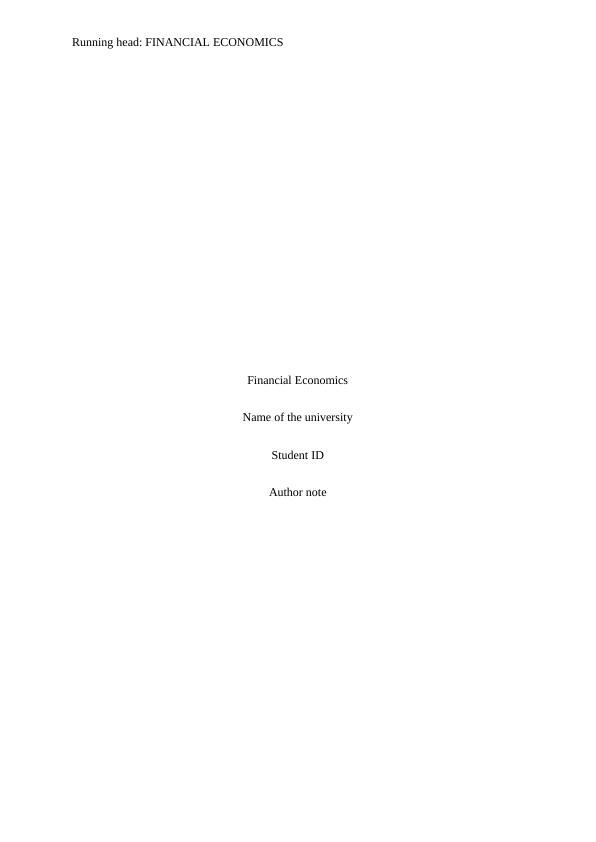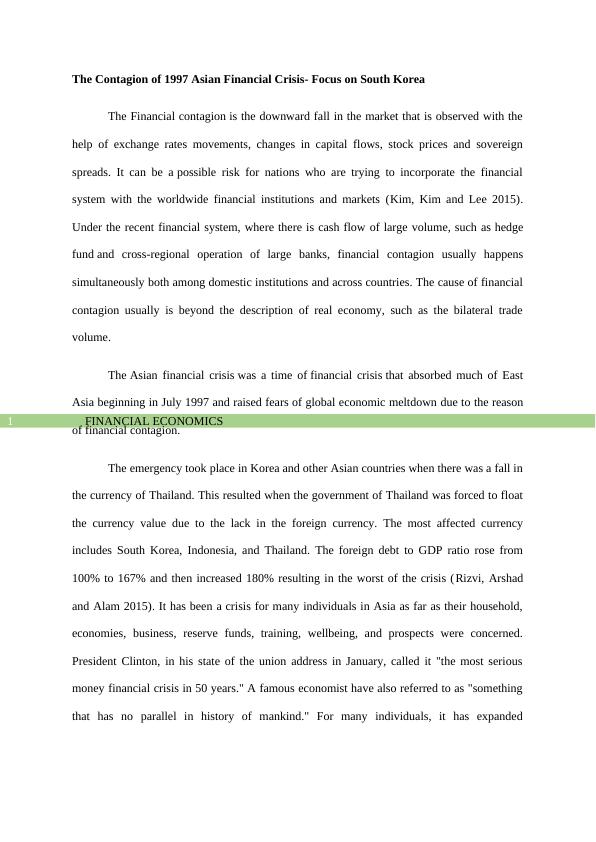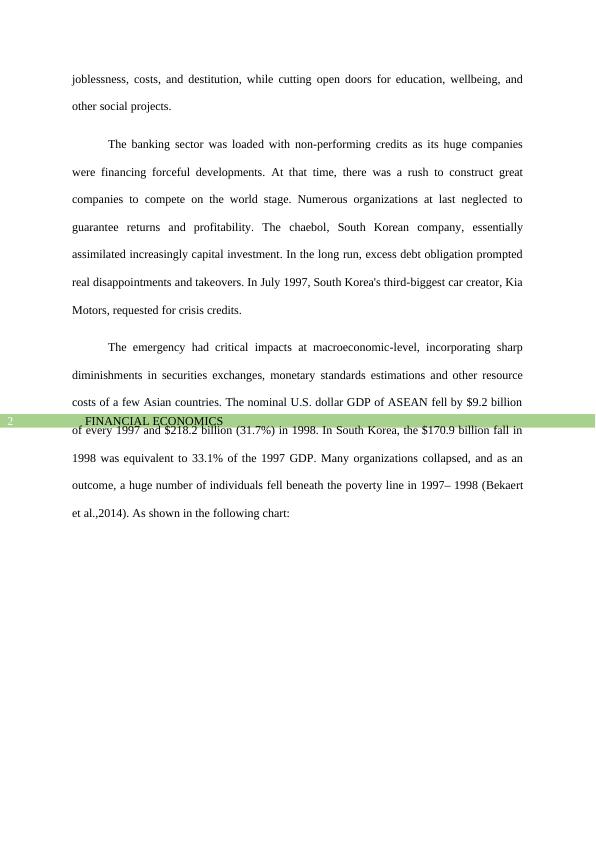(Solution) Financial Economics : PDF
Added on 2021-06-17
6 Pages830 Words28 Views
Running head: FINANCIAL ECONOMICSFinancial EconomicsName of the universityStudent IDAuthor note

FINANCIAL ECONOMICS1The Contagion of 1997 Asian Financial Crisis- Focus on South Korea The Financial contagionis the downward fall in the market that is observed with thehelp of exchange rates movements, changes in capital flows, stock prices and sovereignspreads. It can be apossible risk for nations who are trying to incorporate the financialsystem with the worldwide financial institutions and markets (Kim, Kim and Lee 2015).Under the recent financial system, where there is cash flow of large volume, such ashedgefundand cross-regional operation of large banks, financial contagion usually happenssimultaneously both among domestic institutions and across countries. The cause of financialcontagion usually is beyond the description of real economy, such as the bilateral tradevolume. TheAsian financial crisiswas a time offinancial crisisthat absorbed much of EastAsia beginning in July 1997 and raised fears of global economic meltdown due tothe reasonof financial contagion.The emergency took place in Korea and other Asian countries when there was a fall inthe currency of Thailand. This resulted when the government of Thailand was forced to floatthe currency value due to the lack in the foreign currency. The most affected currencyincludes South Korea, Indonesia, and Thailand. The foreign debt to GDP ratio rose from100% to 167% and then increased 180% resulting in the worst of the crisis (Rizvi, Arshadand Alam 2015). It has been a crisis for many individuals in Asia as far as their household,economies, business, reserve funds, training, wellbeing, and prospects were concerned.President Clinton, in his state of the union address in January, called it "the most seriousmoney financial crisis in 50 years." A famous economist have also referred to as "somethingthat has no parallel in history of mankind." For many individuals, it has expanded

FINANCIAL ECONOMICS2joblessness, costs, and destitution, while cutting open doors for education, wellbeing, andother social projects.The banking sector was loaded with non-performing credits as its huge companieswere financing forceful developments. At that time, there was a rush to construct greatcompanies to compete on the world stage. Numerous organizations at last neglected toguarantee returns and profitability. The chaebol, South Korean company, essentiallyassimilated increasingly capital investment. In the long run, excess debt obligation promptedreal disappointments and takeovers. In July 1997, South Korea's third-biggest car creator, KiaMotors, requested for crisis credits.The emergency had critical impacts at macroeconomic-level, incorporating sharpdiminishments in securities exchanges, monetary standards estimations and other resourcecosts of a few Asian countries. The nominal U.S. dollar GDP of ASEAN fell by $9.2 billionof every 1997 and $218.2 billion (31.7%) in 1998. In South Korea, the $170.9 billion fall in1998 was equivalent to 33.1% of the 1997 GDP. Many organizations collapsed, and as anoutcome, a huge number of individuals fell beneath the poverty line in 1997– 1998 (Bekaertet al.,2014). As shown in the following chart:

End of preview
Want to access all the pages? Upload your documents or become a member.
Related Documents
1997 Asian Financial Crisislg...
|9
|2283
|251
1997 Asian Financial Crisis: Causes, Effects, and Recoverylg...
|11
|2239
|146
EXHANGE RATE CRISIS: RUSSIA VERSUS SOUTH KOREA.lg...
|3
|299
|71
Essay: The Asian Crisis of 1997lg...
|10
|2608
|81
Asian and Mexican financial crises Case Study 2022lg...
|4
|357
|15
International Financelg...
|12
|4090
|417
